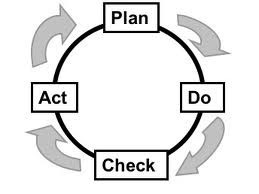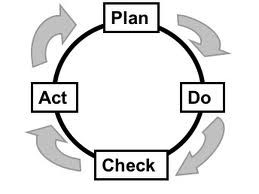This month’s internal audit focus is on Section 10 Improvement.
If you are unaware, the benefit of some of the format changes to the standards is that each of the standards relating to Quality (ISO 9001), Environmental (ISO 14001) and Occupational Health and Safety (45001) all have the same section and requirements now. The benefit is it makes your compliance requirements easier and streamlined.

This month’s internal audit schedule is Continuous Improvement.
Section 10.1 states The organization shall determine and select opportunities for improvement and implement any necessary actions to meet customer requirements and enhance customer satisfaction.
These shall include:
a) improving products and services to meet requirements as well as to address future needs and expectations;
b) correcting, preventing or reducing undesired effects;
c) improving the performance and effectiveness of the quality management system.
NOTE Examples of improvement can include correction, corrective action, continual improvement, breakthrough change, innovation and re-organization
The standard operating procedure Continuous Improvement, Corrective and Preventive Action outlines your continuous improvement process.
What is Continuous Improvement?
Continuous improvement is an ongoing, systematic approach to enhancing an organization’s processes, products, or services by identifying and implementing incremental changes. The main goal of continuous improvement is to achieve better efficiency, effectiveness, and quality over time. It is grounded in the belief that there is always room for improvement and that even small, incremental changes can yield significant benefits when consistently applied.
Continuous improvement is often associated with methodologies and frameworks like Lean, Six Sigma, Total Quality Management (TQM), and the Plan-Do-Check-Act (PDCA) cycle. These approaches provide structured processes and tools for identifying opportunities for improvement, implementing changes, and measuring their impact.
Key aspects of continuous improvement include:
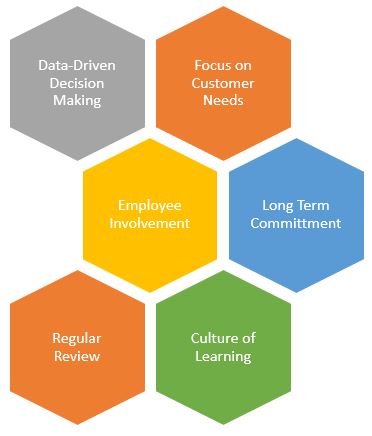
- Focus on customer needs: Customer satisfaction is a primary driver of continuous improvement, as it helps organizations align their efforts with customer expectations and preferences.
- Data-driven decision-making: Continuous improvement relies on the collection and analysis of data to identify areas of improvement, set targets, and measure progress.
- Employee involvement: Engaging employees in the improvement process encourages a sense of ownership and responsibility, leading to higher motivation and better outcomes.
- Culture of learning: Continuous improvement fosters a learning culture where employees are encouraged to share knowledge, learn from mistakes, and experiment with new ideas.
- Long-term commitment: Continuous improvement requires sustained effort and commitment from all levels of an organization, as it focuses on incremental progress over time rather than immediate, dramatic change.
- Regular review and evaluation: Organizations must regularly review and evaluate their processes, products, and services to identify opportunities for improvement and to measure the effectiveness of changes implemented.
By embracing continuous improvement, organizations can enhance their competitiveness, adapt to changing market conditions, and achieve long-term success.
Plan, Do, Check Act
The Plan Do Check Act (PDCA) cycle is an important tool for the organisation to implement continuous improvement initiatives. It provides a consistent approach to the implementation of ideas and the measurement of results.
Step 1: Plan
- Identify your problem
- Collect data (e.g., using check sheets)
- Set targets
Step 2: Do
- Analyse information and develop a plan
- Do a trial run
Step 3: Check
- Check your results (e.g., using control charts, rosters and checklists)
- Talk to staff and customers
Step 4: Act
- Take action to make changes permanent by building them into the process, communicating the changes and documenting evidence of your initiative.
What are internal audits?
Internal audits are systematic, independent, and documented processes used to evaluate an organization’s internal control systems, operations, and practices against established internal certification standards or guidelines.
Internal audits aim to ensure compliance, identify areas for improvement, and maintain a strong internal control environment.
With respect to internal certification standards, internal audits serve several purposes:
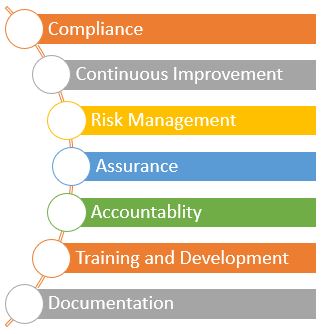
- Compliance: Audits ensure that the organization is adhering to its own policies, procedures, and internal standards. This helps maintain a consistent level of quality across operations and reduces the risk of non-compliance with external regulations or industry-specific requirements.
- Continuous improvement: By assessing the effectiveness of internal processes and identifying areas of weakness, internal audits facilitate continuous improvement by pinpointing areas that require attention, thus driving efficiency and effectiveness within the organization.
- Risk management: Internal audits help identify potential risks, vulnerabilities, and inefficiencies within the organization, enabling management to make informed decisions on risk mitigation and resource allocation.
- Assurance: Internal audits provide assurance to management, employees, and stakeholders that the organization’s internal controls are functioning effectively and that the organization is meeting its internal certification standards.
- Accountability: Internal audits promote accountability by evaluating the performance of various departments and individuals against established standards, encouraging a culture of responsibility and transparency.
- Training and development: Internal audits can identify gaps in employee knowledge or skills, allowing for targeted training and development initiatives that support continuous improvement and employee growth.
- Documentation: Internal audits generate documentation that demonstrates the organization’s commitment to maintaining high-quality processes and standards. This documentation can be used to support external audits, certifications, or accreditations if required.
In summary, internal audits with respect to internal certification standards help organizations maintain compliance, manage risks, drive continuous improvement, and demonstrate their commitment to quality and excellence.
Why should we adopt a continuous improvement approach within the organisation?
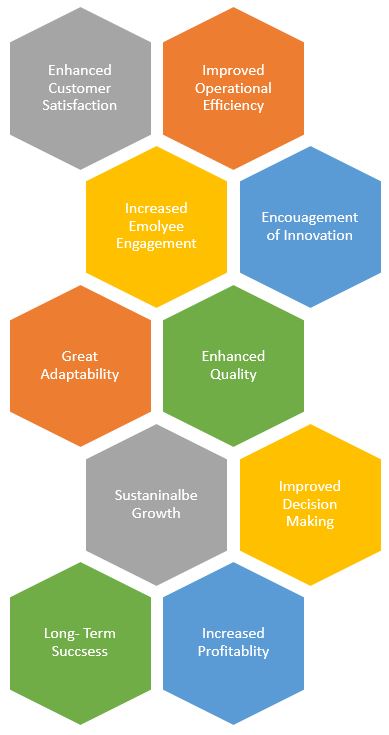
Adopting a continuous improvement approach within your small business can offer numerous benefits. Some of the key advantages include the following:
- Enhanced customer satisfaction: Focusing on continuous improvement helps you identify and address customer needs more effectively, leading to higher satisfaction
- and loyalty.
- Improved operational efficiency: By consistently evaluating and refining your processes, you can reduce waste, minimize errors, and streamline operations, ultimately reducing costs and increasing productivity.
- Increased employee engagement: Involving employees in the improvement process fosters a sense of ownership and pride in their work. This can lead to higher job satisfaction, increased motivation, and better retention.
- Encouragement of innovation: Continuous improvement promotes a culture of experimentation and learning, where employees are encouraged to take calculated risks and explore new ideas, leading to more innovative products and services.
- Greater adaptability: A continuous improvement mindset enables your business to respond more effectively to changing market conditions, customer preferences, and competitive pressures.
- Enhanced quality: By continuously refining your products, services, and processes, you can improve their quality, which can lead to increased customer satisfaction, better word-of-mouth referrals, and a stronger brand reputation.
- Sustainable growth: Continuous improvement helps your business maintain a strong foundation by identifying and addressing inefficiencies and bottlenecks, allowing for sustainable and healthy growth over time.
- Improved decision-making: Data-driven continuous improvement processes provide valuable insights and information, enabling better-informed decision-making and strategic planning.
- Increased profitability: By improving operational efficiency, reducing costs, enhancing customer satisfaction, and fostering innovation, continuous improvement can ultimately contribute to higher revenues and increased profitability.
- Long-term success: Adopting a continuous improvement mindset helps to create a culture of excellence, resilience, and adaptability, which are essential elements for long-term success in an increasingly competitive business environment.
Regardless of whether you have international certification or not, continuous improvement is critical to the success of any business.
Where do we Record Continuous Improvement?
In the continuous improvement register?
What is the continuous improvement register, you ask?
A continuous improvement register (CIR) is a tool used by organizations to systematically track, document, and manage improvement opportunities and initiatives within their processes, products, or services. The register is part of the broader continuous improvement process, which aims to enhance organizational performance and efficiency by identifying and addressing areas for improvement on an ongoing basis.
The continuous improvement register typically includes the following:
- A list of improvement opportunities or ideas may come from various sources, such as employees, customers, suppliers, or management.
- A description of the identified issue or problem.
- The potential benefits or impact of the improvement on the organization (e.g., cost savings, increased efficiency, improved customer satisfaction).
- The priority or urgency of the improvement helps determine the order in which improvements will be addressed.
- The person or team responsible for implementing the improvement.
- The target completion date or timeframe for the improvement.
- The current status of the improvement (e.g., not started, in progress, completed, or cancelled).
- Any relevant notes or comments?
A designated team or individual typically maintains the continuous improvement register within an organisation and is responsible for overseeing the continuous improvement process. The register may be kept in various formats, such as spreadsheets, databases, or specialized software, depending on the organization’s size and needs. Regular reviews and updates to the register help ensure that the organization is actively working on improvements and can track its progress over time.
Author: Michael Huggett
